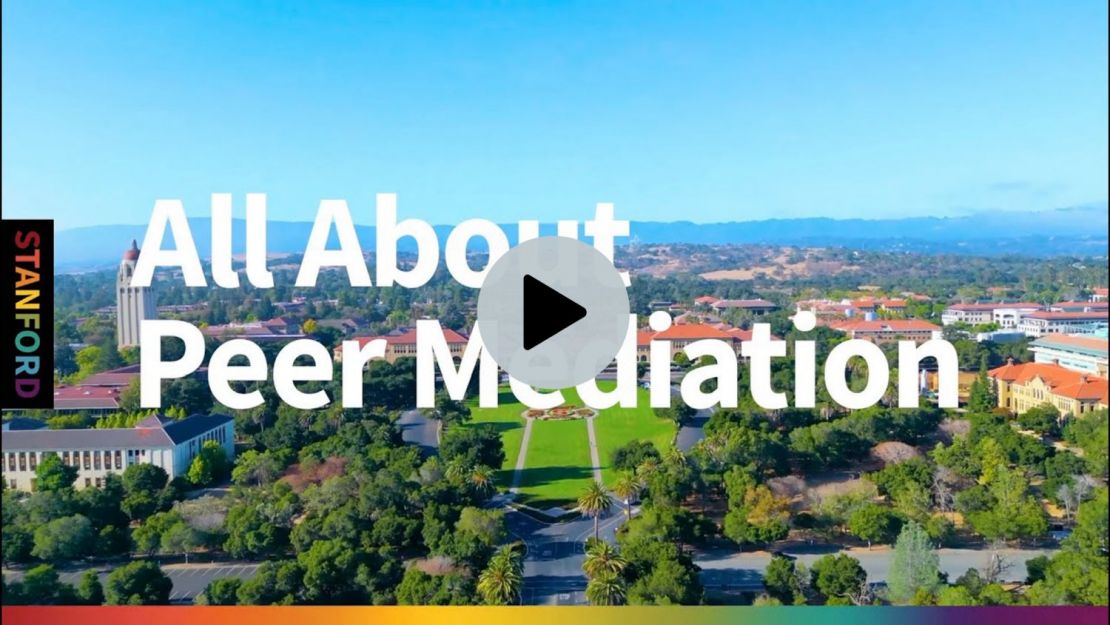As Stanford’s Peer Mediation program marks its one-year anniversary, it has expanded beyond providing formal mediation services to also offer shorter consultations and workshops for the campus community.
The Office of Inclusion, Community and Integrative Learning launched the Peer Mediation program last February to offer a process for students who wanted to resolve conflict with other students.
This year, the program has seven student mediators who have gone through a 25-hour training program that explores why conflicts happen, how to plan for a mediation session, and what to do when the conversation breaks down.
“We learned in our training what conflict is and how to approach it, as well as about different conflict resolution styles – some people are more communicative and some more avoidant,” said Emily He, a first-year medical student at the Stanford University School of Medicine and one of the peer mediators.
Three types of conflict resolution assistance
With the expanded services, the program offers three types of conflict resolution assistance for students:
Mediation. Students who want a peer mediator’s help resolving a conflict fill out an online form, offering details and the names of others they would like involved. Once staff members have verified that the dispute is appropriate for a peer mediator, they check with the other parties to see if they want to participate. Assuming they do, the mediators meet one-on-one with each party in the conflict before meeting with them together.
In the program’s first year, the most common type of problem students wanted to resolve in mediation involved group projects for classes, said Ankita Rakhe, assistant dean for student support and director for ICIL special projects in the Office of Inclusion, Community and Integrative Learning.
Consultations. The form requesting mediation allows students to instead choose a consultation. This is a less involved process in which a peer mediator meets with an individual student who is requesting advice.
A consultation can be helpful if the other party doesn’t want mediation, or if the student simply wants suggestions for how to resolve a problem. It is necessarily one-sided, since the mediator does not talk to the other party, but the student can still receive ideas for how to resolve the conflict. A consultation could ultimately lead to mediation if both parties wanted it to.
“A consult will be faster, and only one person has to be involved in it,” Rakhe said. “If they want to solve a problem but don’t have the tools or the language, the peer mediator will give them suggestions.”
Workshops. Student community leaders have been given information about the Peer Mediation program. They can request workshops for their groups that offer a framework for resolving conflicts and give students the tools and language to do it. This year, peer mediators have given numerous workshops to student groups.
“When we talk to student groups on campus, we’re offering education so that people can prepare for conflicts before they happen,” He said.
